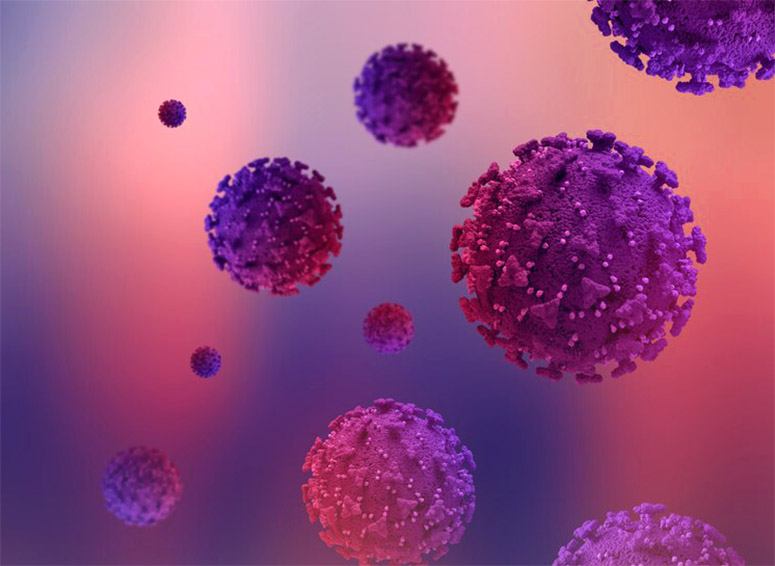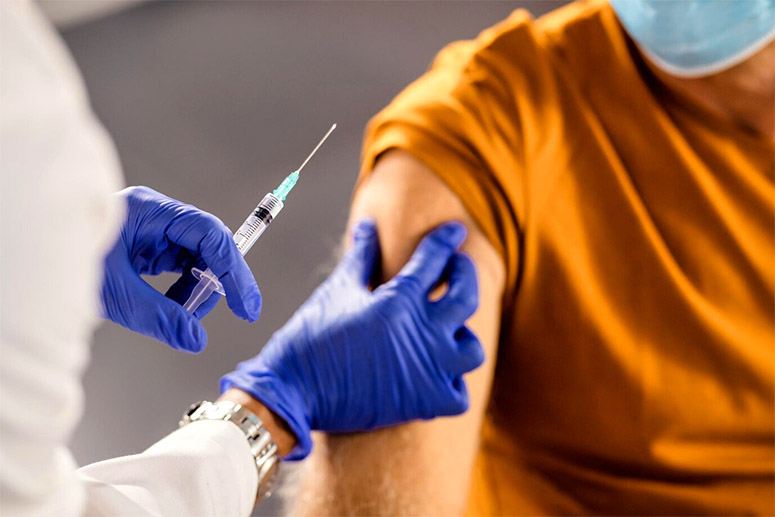Contents
Human Papillomavirus (HPV) is a prevalent yet frequently misinterpreted virus that can have significant health implications.
Given its various strains, some of which are associated with serious conditions such as cancer, a comprehensive understanding of HPV is essential for all individuals. Many people wonder, what are the odds of having HPV?
This article examines critical aspects of HPV, including its prevalence, risk factors, symptoms—encompassing both physical and psychological dimensions—diagnosis, treatment options, and prevention strategies.
By addressing these important topics, the aim is to equip individuals with the knowledge necessary to navigate HPV confidently and safely.
What is HPV?
Human Papillomavirus (HPV) is a sexually transmitted infection (STI) that can impact both men and women, and it is recognized as one of the most prevalent viral infections globally.
With more than 100 distinct types, certain strains of HPV are associated with significant health concerns, including cervical cancer, anal cancer, and genital warts.
A thorough understanding of HPV is essential for sexual health education and public health initiatives, particularly because specific high-risk HPV types possess oncogenic potential, which may result in long-term health complications if not addressed appropriately.
How common is HPV?
Human Papillomavirus (HPV) is highly prevalent, with statistics indicating that nearly 79 million Americans are currently infected with the virus. Furthermore, approximately 14 million new infections are reported annually.
The prevalence of HPV varies across different demographics, including age group, gender, and sexual behavior.
This underscores the critical need for effective health education and public awareness campaigns aimed at informing individuals about the associated risks and prevention strategies related to this sexually transmitted infection.
What are the risk factors for HPV?
Risk factors for HPV infection are diverse and include sexual behaviors such as having multiple sexual partners and inconsistent condom use, which significantly elevate the likelihood of transmission.
Additionally, factors such as a compromised immune system, genetic predisposition, and family history may contribute to an individual’s vulnerability to high-risk HPV types and associated health complications, including cervical cancer and genital warts.
Environmental factors, including exposure to tobacco smoke and other carcinogens, can further complicate an individual’s risk profile. Behavioral factors, such as the early initiation of sexual activity and a lack of regular health screenings, also contribute to the potential for HPV-related illnesses.
A comprehensive understanding of these risk factors is essential for developing effective public health initiatives, as they highlight the importance of proactive measures, including vaccination and routine health check-ups, to mitigate the spread of HPV.
By addressing these various influences, healthcare providers can enhance patient education regarding prevention strategies, ultimately improving community health and reducing the burden of HPV-related diseases.
What are the symptoms of HPV?

Symptoms of HPV can vary considerably based on the specific type of virus, with many individuals remaining asymptomatic and potentially unaware of their infection.
Certain low-risk HPV types may result in the development of genital warts, whereas high-risk types are associated with more severe health implications, such as cervical cancer.
This highlights the critical importance of awareness and regular screenings to facilitate the early identification of any potential symptoms.
A comprehensive understanding of the various HPV types and their corresponding symptoms is essential for promoting improved health outcomes.
Can HPV be asymptomatic?
Human Papillomavirus (HPV) can frequently present without symptoms, resulting in many individuals remaining unaware of their infection status.
This asymptomatic characteristic is largely attributed to the immune system’s ability to clear the virus effectively in numerous cases. However, certain high-risk HPV types may persist within the body and potentially lead to serious health complications over time.
This underscores the importance of routine screenings and maintaining awareness of one’s sexual health status.
The implications of being asymptomatic can be extensive, as individuals may unknowingly transmit the virus to their partners, thereby contributing to its continued spread within the population.
This situation highlights the essential role of public health education in ensuring that individuals comprehend the significance of regular testing and the potential for viral persistence, even when symptoms are absent.
Healthcare providers must take a proactive stance in promoting awareness, supplying relevant resources, and fostering open discussions regarding HPV and associated health risks.
By creating an environment conducive to understanding, individuals can be enableed to take proactive measures in managing their health, ultimately reducing the burden of HPV-related diseases.
What are the physical symptoms of HPV?
Physical symptoms of HPV can present in various forms, most notably through the emergence of genital warts, which are associated with low-risk HPV types.
Additional physical symptoms may include alterations in cervical tissue, detectable through routine screenings, that could indicate an elevated risk of cancer linked to certain high-risk HPV types.
Regular health check-ups are essential for the early detection and management of these symptoms.
These manifestations can serve as critical indicators of an individual’s overall sexual health, emphasizing the importance of proactive engagement in healthcare.
While genital warts are often not harmful, they can be distressing and may affect emotional well-being and interpersonal relationships. Similarly, if cervical changes are left unmonitored, they can progress into more serious conditions, including cervical cancer.
The relationship between HPV symptoms and long-term health risks underscores the necessity for individuals to pursue regular screenings and consultations.
Patient education is crucial, as it enables individuals with knowledge regarding HPV transmission, prevention, and the importance of vaccinations, thereby fostering a culture of health awareness and proactive healthcare decision-making.
What are the psychological symptoms of HPV?
Psychological symptoms associated with HPV infection may include anxiety, depression, and feelings of shame or isolation, largely due to the societal stigma surrounding sexually transmitted infections.
The emotional impact of an HPV diagnosis can significantly influence an individual’s mental health and overall well-being, underscoring the importance of support groups and effective communication between patients and healthcare providers.
Navigating the complexities of HPV can be daunting, particularly when confronted with treatment options and potential health implications. Individuals may experience feelings of inadequacy or fear regarding intimate relationships, which can further intensify feelings of loneliness.
A robust support system is essential, as it can foster resilience and facilitate healing during this challenging period.
Raising community awareness about HPV is critical to dismantling stigma; enhancing health literacy enables individuals to seek the necessary care and resources.
Mental health resources, such as counseling and peer support groups, are integral in assisting those affected in maintaining their emotional well-being and restoring their self-esteem following a diagnosis.
How is HPV diagnosed?
Diagnosing HPV generally entails a comprehensive approach that includes a combination of screening tests and consultations with healthcare professionals.
This process is designed to detect the presence of the virus or any associated abnormalities. Routine Pap smears and HPV tests are essential for identifying high-risk HPV types and early indicators of cervical cancer.
Adhering to established medical guidelines, healthcare providers can deliver appropriate follow-up care and treatment options based on the results of these tests.
What are the screening tests for HPV?
Screening tests for HPV typically encompass the Pap smear and HPV test, which collectively assist in identifying any abnormal cervical changes that may suggest the presence of high-risk HPV types.
Regular routine screenings are essential for the early detection of HPV and its potential progression to cervical cancer, thereby facilitating timely follow-up care and interventions that can enhance health outcomes.
Plus these primary tests, healthcare providers may also employ co-testing, which combines both the Pap smear and HPV test to yield more comprehensive results.
This method improves the accuracy of identifying women at risk and allows for the development of tailored individualized care plans.
Regular screenings not only contribute to individual health but also align with broader healthcare policies focused on cancer prevention and early detection.
These policies underscore the importance of systematic testing in reducing cervical cancer rates and encourage women to adhere to established screening schedules, thus promoting a culture of proactive health management and awareness regarding the implications of HPV.
What are the diagnostic tests for HPV?
Diagnostic tests for HPV, including HPV typing and viral load testing, provide essential information regarding the specific strain of the virus to which an individual is exposed, as well as its potential health implications.
Typically, these tests are conducted following a suspicious finding from routine screening and necessitate medical consultation for accurate interpretation of the results.
Access to these diagnostic tools is critical for effective management and treatment planning.
It is imperative to understand the distinctions between diagnostic tests and routine screening – while screenings are designed to identify risk factors and facilitate early intervention, diagnostic tests confirm the presence of infection and inform patient-specific treatment options.
The role of these tests in patient management can significantly influence decisions related to follow-ups and therapeutic interventions, thereby underscoring the importance of individualized care.
Access to these diagnostic tests may vary considerably based on geographical location and healthcare infrastructure, highlighting the need for equitable healthcare access.
Informed medical consultation is crucial for interpreting results, as it enables patients with knowledge and enables them to make proactive health decisions tailored to their unique circumstances.
What are the treatment options for HPV?

Treatment options for HPV are contingent upon the specific type of infection and the associated symptoms. Healthcare providers recommend a combination of medical treatments and natural remedies to manage the condition effectively.
For visible warts caused by low-risk HPV types, treatment may involve topical medications or procedural interventions.
Additionally, it is critical to monitor for high-risk HPV types to prevent potential health complications, such as cervical cancer. Regular follow-up care is essential to ensure effective management of the infection.
What are the medical treatments for HPV?
Medical treatments for HPV primarily aim to manage symptoms and may involve the application of topical medications for genital warts or procedures to excise abnormal cervical cells associated with high-risk HPV types.
Healthcare providers typically recommend treatments based on the individual’s health history and the specific HPV type, ensuring that patients receive care that is tailored to their unique needs.
Plus topical treatments such as imiquimod and podofilox for warts, healthcare professionals may also suggest surgical options, including cryotherapy or laser therapy, to effectively eliminate lesions.
Regular monitoring is essential, particularly for individuals with persistent high-risk HPV, as it facilitates the early identification of potential changes in cervical cells.
The healthcare provider plays a crucial role in developing a personalized treatment plan and must also emphasize the importance of patient education.
This approach ensures that individuals comprehend their condition, the available treatment options, and the necessity for regular follow-ups, thereby fostering a collaborative strategy for effective management.
What are the natural remedies for HPV?
Natural remedies for HPV primarily aim to enhance the immune response and may encompass lifestyle modifications, dietary changes, and the use of herbal supplements designed to reduce viral load and promote overall health.
While these remedies may provide certain benefits, it is crucial to discuss any alternative treatment options with healthcare providers to ensure a comprehensive approach to managing HPV and addressing its potential risks.
In conjunction with consultations with healthcare professionals, individuals may consider incorporating a range of natural strategies into their daily routines.
A diet abundant in fruits, vegetables, and whole grains can supply essential nutrients that support immune function. Engaging in regular physical activity not only improves overall health but also enhances the body’s capacity to combat infections.
Furthermore, stress management techniques, such as mindfulness practices or yoga, can alleviate undue strain on the immune system.
Herbal supplements, including echinacea and garlic, have also been proposed for their potential immune-boosting effects.
When combined with traditional medical treatments, these natural approaches can significantly strengthen the body’s response to HPV.
How can HPV be prevented?
Preventing HPV infection necessitates a comprehensive approach that includes vaccination, safe sex practices, and health education aimed at raising awareness about the risks associated with this prevalent sexually transmitted infection.
The HPV vaccine has demonstrated high efficacy in providing protection against the most harmful strains of the virus.
Moreover, consistent use of condoms and limiting the number of sexual partners can substantially reduce transmission rates and the associated health complications.
What are the vaccines available for HPV?
Several vaccines are available to provide protection against human papillomavirus (HPV), with Gardasil and Cervarix being the most widely utilized.
These vaccines specifically target the most prevalent high-risk HPV types associated with cervical cancer and other HPV-related malignancies.
Consequently, vaccination is a critical element of cancer prevention strategies within public health initiatives aimed at reducing the incidence of HPV infections across various demographics.
By effectively preventing these strains, these vaccines not only enhance individual health outcomes but also contribute to herd immunity, thereby significantly decreasing the overall prevalence of the virus within the community.
The vaccines are recommended for preteens, ideally administered between the ages of 11 and 12, although they can be given as early as age 9 and continue to be offered up to age 26 for individuals who have not received adequate vaccination.
Despite the demonstrated efficacy of these vaccines, vaccination rates exhibit considerable variability among different populations.
This disparity is often influenced by factors such as access to healthcare, educational resources regarding HPV, and cultural attitudes toward vaccination.
Therefore, it is imperative to increase awareness and improve access to these vaccines to combat HPV-related health issues and ensure that all groups can benefit from this essential preventive measure.
What are the safe sex practices to prevent HPV?
Implementing safe sex practices is crucial for the prevention of HPV transmission, with consistent condom use identified as one of the most effective methods to mitigate the risk of infection.
Encouraging open communication regarding sexual health and behaviors with partners can further promote healthy practices and reduce the likelihood of contracting sexually transmitted infections, including HPV.
Establishing monogamous relationships can significantly decrease the risk by limiting exposure to multiple partners and their associated health statuses.
It is also imperative for individuals to be knowledgeable about their partners’ sexual health histories and to advocate for regular health screenings.
Educating individuals about HPV and its modes of transmission enables them to make informed decisions regarding their sexual activities.
By prioritizing comprehensive health education in both schools and communities, it is possible to cultivate an environment that not only supports safe practices but also encourages individuals to take a proactive approach to their sexual health.
Can abstinence prevent HPV?
Abstinence from sexual activity is the only guaranteed method to prevent HPV infection, as it eliminates any risk of exposure to the virus.
Although abstinence may not be a practical option for everyone, promoting it as part of comprehensive sexual health education can effectively contribute to risk reduction strategies and enhance awareness regarding the potential health implications of HPV.
Incorporating discussions about abstinence within educational programs creates a supportive environment that enables individuals to make informed decisions about their sexual health.
These programs should also encompass various aspects of HPV, including its modes of transmission, associated health risks, and the significance of vaccination.
By providing individuals with accurate information regarding HPV prevention strategies – including safe practices and the advantages of regular health screenings – they are enableed to adopt healthier behaviors in the future.
Ultimately, a well-rounded approach fosters both personal responsibility and increased public health awareness, ensuring that individuals are equipped to navigate their sexual health with confidence.
What are the complications of HPV?

Complications arising from HPV infection can have significant health implications, particularly with high-risk HPV types that are known to cause cervical cancer and other malignancies.
The long-term effects of HPV may include persistent infections, abnormal cellular changes, and an elevated risk for various cancers.
Therefore, it is essential to monitor and manage HPV infections effectively through routine screenings and consultations with healthcare professionals.
What are the health risks associated with HPV?
The health risks associated with human papillomavirus (HPV) vary based on the specific type of virus, with high-risk HPV types being linked to an elevated risk of cervical cancer and other anogenital cancers.
Regular screening and monitoring for cervical changes are essential for individuals infected with high-risk HPV types, as early detection can significantly improve health outcomes and mitigate the long-term effects associated with these infections.
Moreover, the spectrum of HPV-related health complications extends beyond cervical cancer, as certain strains are also implicated in the development of oropharyngeal and anal cancers.
It is crucial for individuals at risk to engage with healthcare providers who can offer customized screening recommendations and educate them on vaccination as a preventive measure.
Implementing effective healthcare policies that facilitate access to regular screening and enhance public awareness about HPV can substantially strengthen cancer prevention strategies.
This approach not only aids in early detection but also underscores the importance of proactive health management among individuals, fostering a more informed and health-conscious community.
Can HPV cause cancer?
Certain high-risk HPV types have been conclusively linked to cancer, with cervical cancer being the most recognized association.
Research has established a definitive correlation between persistent infection with high-risk HPV types and the development of various cancers, including anal, vulvar, and oropharyngeal cancers.
This underscores the necessity for proactive screening and prevention strategies to mitigate these significant health risks.
The oncogenic potential of high-risk HPV types extends beyond cervical cancer, presenting a broader public health concern. Many individuals may be unaware that they are carriers of these viruses, which can lead to cellular changes that precede the onset of cancer.
Preventive measures, such as the HPV vaccine, are therefore of paramount importance.
Vaccination significantly reduces the risk of infection from the most dangerous strains, while regular screenings facilitate the early detection of abnormal cellular changes, enabling timely intervention.
By raising awareness and promoting these strategies, the risk of HPV-related cancers can be substantially diminished, preventing numerous cases and ultimately saving lives.
Check our FAQ further down the page for details on the odds of having HPV.
Journey into the captivating world of probabilities and notable events. Expand your horizons and feed your curiosity with our engaging articles at WhatAreTheOddsOf.NET.


